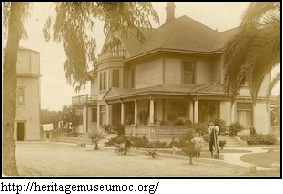Orange County is located in southeastern Texas, near the Sabine River. The Texas government formed Orange County from parts of Jefferson County in 1852. The Atakapan Indians originally inhabited the territory. Orange County was at the center of the fight between the French and Spanish over land in the sixteenth and eighteenth centuries. Under the Adams-Onís Treaty of 1819, the Sabine River demarcated the southernmost boundary for the United States, which lead to increased white settlement in the area.
In the decade before the Civil War, the city of Orange transformed into the center of the county with the addition of river travel via the Gulf Coast. Unlike other economies of the Old South, Orange County focused primarily on river trade and less on cotton production. The county voted in favor of secession and witnessed the famous Battle of Sabine Pass in 1863, which stymied Union progression into Texas.
transformed into the center of the county with the addition of river travel via the Gulf Coast. Unlike other economies of the Old South, Orange County focused primarily on river trade and less on cotton production. The county voted in favor of secession and witnessed the famous Battle of Sabine Pass in 1863, which stymied Union progression into Texas.
In the 1870s and 1880s, Orange County's economy began to recover through the Lutcher-Moore Lumber Company in 1876 and the operation of the Texas and New Orleans Railroad. The county prospered during the next thirty years, until the emergence of the oil industry via the Bland Well in 1913. This made numerous manufacturing and processing jobs for hundreds of workers. The Great Depression hit the economy hard but it improved drastically during World War II with shipbuilding, and farming and livestock.
Museum/Historic Site
Historical Association/Organizations
Documents/Resources
- Books
- Digital Orthophoto quadrangle US Geodata; Oil well drilling Big Thicket Reserve planning
- Golden Triangle BMP informer: updating forest landowners on forestry and water quality issues (Journal)
- McFarland-Russell family papers (Manuscript)
- 1900 Census population and housing (Map)
- Inventory of county archives; Automobile insurance rate guide (Serial)
Text: http://www.tshaonline.org/handbook/online/articles/hco03 Handbook of Texas Online, Texas State Historical Association.